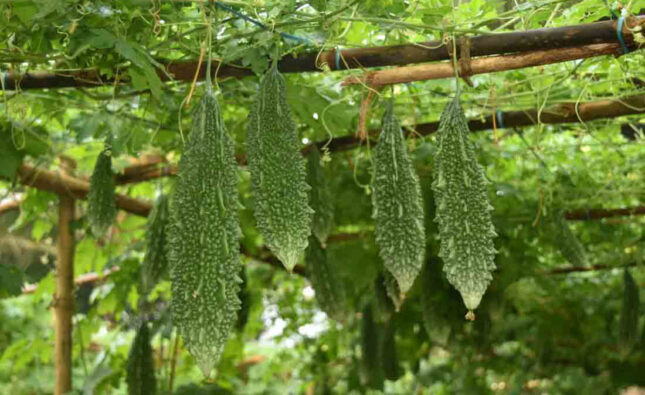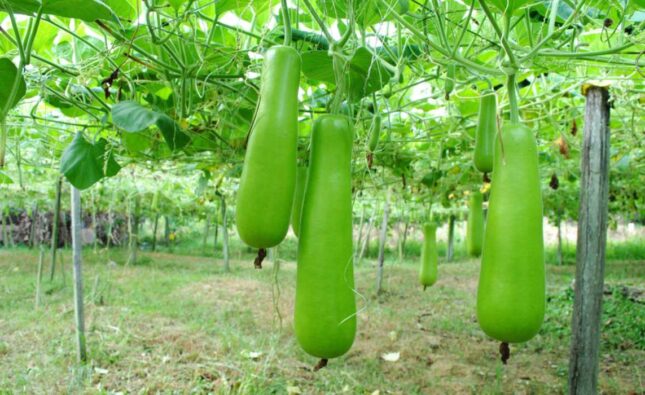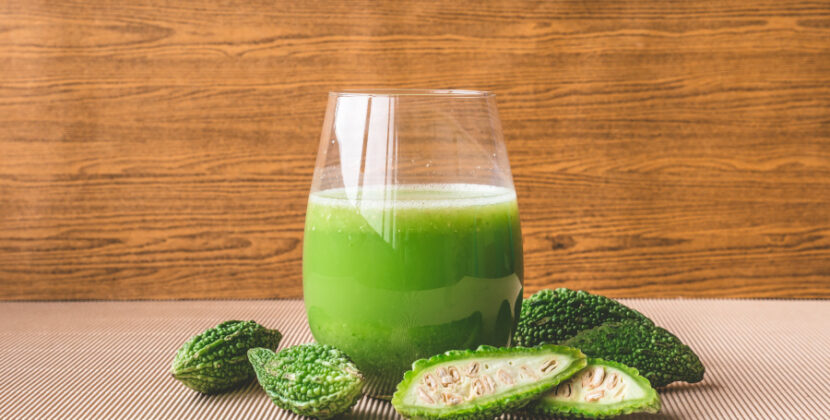How to Start Grapes Cultivation, Its Commercial Varieties, Climatic Condition for Planting Grapes & Sells & Export: A Complete Guide
Grape cultivation is believed to have originated in Armenia near the Caspian Sea in Russia, from where it spread westward to Europe and eastward to Iran and Afghanistan. Grape was introduced in India in 1300 AD by invaders from Iran and Afghanistan. Grapes are small, juicy fruits that grow in clusters on woody vines belonging to the botanical genus Vitis. They are one of the oldest cultivated crops and have been consumed by humans for thousands of years. Grapes come in various colors, including green, red, and purple, and they can be either seedless or contain seeds. Grape (Vitis sp.) belonging to Family Vitaceae is a commercially important fruit crop of India. It is a temperate crop which has got adapted to sub-tropical climate of peninsular India. About 80% of the production comes from Maharashtra followed by Karnataka and Tamil Nadu.The fruit contains about 20% sugar in easily digestible form besides being rich in calcium and phosphorus. World over it is grown mainly for wine making (82% production), raisin making (10% production) and rest for table purpose (8%). In India, however it is mostly consumed as fresh fruit and only a limited quantity is utilized for the production of liquor, dry fruits like raisins etc.
Site Selection:
Choose a suitable site for grape cultivation. Grapes thrive in well-drained soil with good fertility. The site should have access to sunlight, preferably on south-facing slopes, to maximize sun exposure and aid in ripening. Consider the local climate, as grape varieties have specific temperature and sunlight requirements.
Commercial Verities of Grapes
There are numerous commercial grape varieties grown worldwide for various purposes, including fresh consumption, winemaking, raisin production, and juice production. Here are some well-known commercial grape varieties:
1. Thompson Seedless:
Also known as Sultana, Thompson Seedless is a popular green grape variety known for its sweet and mild flavor. It is widely used for table grapes, raisins, and white grape juice.
2. Red Globe:
Red Globe is a large, round, and seeded red grape variety. It is known for its crunchy texture and sweet flavor. Red Globe grapes are commonly used for fresh consumption and are popular in many markets.
3. Flame Seedless:
Flame Seedless is a seedless red grape variety known for its crisp texture and sweet flavor. It is a popular table grape variety and is often used in fruit salads, desserts, and as a snack.
4. Concord:
Concord grapes are deep purple and have a distinctive sweet-tart flavor. They are commonly used for making grape juice, jellies, and jams. Concord grapes are also used in the production of some red wines.
5. Chardonnay:
Chardonnay is a white grape variety that is highly esteemed for winemaking. It is used to produce dry, full-bodied, and often oak-aged white wines. Chardonnay wines are known for their rich flavors and complex aromas.
6. Cabernet Sauvignon:
Cabernet Sauvignon is a popular red grape variety used in winemaking. It produces full-bodied red wines with rich tannins, deep color, and flavors of dark fruits, herbs, and spices. Cabernet Sauvignon wines are often aged to enhance their complexity.
7. Merlot:
Merlot is another widely planted red grape variety used for winemaking. It produces medium to full-bodied red wines with flavors of black cherries, plums, and chocolate. Merlot wines are often smooth and approachable.
8. Pinot Noir:
Pinot Noir is a red grape variety known for its elegance and complexity. It produces light to medium-bodied red wines with flavors of red berries, cherries, and earthy notes. Pinot Noir wines can be highly expressive and are often associated with Old World wine regions like Burgundy.
9. Muscat:
Muscat grapes belong to a family of grape varieties known for their aromatic properties. They have a distinctive floral and musky aroma and are used for making sweet wines, dessert wines, and some sparkling wines.
10. Riesling:
Riesling is a white grape variety known for its aromatic nature and high acidity. It is used to produce a range of wines, from dry to sweet. Riesling wines often exhibit flavors of citrus, stone fruits, and floral notes.
These are just a few examples of commercial grape varieties. There are many more varieties grown worldwide, each with its own unique characteristics, flavors, and uses. The selection of commercial grape varieties often depends on regional preferences, market demand, and the specific requirements of growers and winemakers.
Field & Soil Preparation:
Trenches of 0.6 m width and 0.6 m depth are to be dug at a distance of 3 m apart for Muscat and pits of 1m x 1m x 1m should be dug for other varieties. Well-decomposed FYM or compost or green leaf manure has to be applied in the trenches or pits as the case may be and then covered with soil. Plant the rooted cuttings in June-July. The grape is widely adopted to various soil conditions, but the yield and quality reach to the highest on good fertile soils have pH 6.5 to 8.5, organic carbon above 1.0%, free of lime and having a medium water holding capacity.
Climate For Grapes Cultivation
Grapes are cultivated in a wide range of climates around the world, but they generally prefer temperate climates with specific temperature and sunlight requirements for optimal growth and fruit production. Here are some key considerations regarding the climate for grape cultivation:
1. Temperature:
Grapes have specific temperature requirements during the growing season. Most grape varieties thrive in regions with average temperatures between 15°C (59°F) and 25°C (77°F) during the growing season. However, specific varieties have different temperature preferences. Some grapes, such as those used for cool-climate wine production like Pinot Noir, can tolerate cooler temperatures, while others, like those used for warm-climate wine production like Cabernet Sauvignon, prefer warmer temperatures.
2. Sunlight:
Grapes require ample sunlight for photosynthesis and fruit ripening. They typically need at least 6 hours of direct sunlight per day. Regions with long, sunny days and abundant sunlight are ideal for grape cultivation. Sun exposure helps the grapes develop optimal sugar levels, flavors, and desirable color.
3. Growing Degree Days (GDD):
Growing Degree Days is a measure that accounts for temperature and is often used to determine the suitability of a region for grape cultivation. It calculates the accumulated heat units above a certain base temperature threshold throughout the growing season. Different grape varieties have specific GDD requirements, and choosing varieties suited to the local GDD can help ensure successful cultivation.
5. Rainfall and Humidity:
While grapes need water for growth, excessive rainfall and high humidity can increase the risk of diseases, such as powdery mildew and downy mildew. Grapevines prefer well-drained soils and moderate rainfall during the growing season. Dry periods near harvest time are beneficial to minimize the risk of rot and fungal diseases.
6. Seasonal Variation:
Grapevines typically require a dormant period during winter to rest and prepare for the next growing season. They need a certain amount of chilling hours (a period of cool temperatures) during dormancy to break bud dormancy and promote healthy growth in the following spring.
7. Microclimates:
Within larger regions, there may be variations in microclimates that can influence grape cultivation. Factors like elevation, proximity to bodies of water, slope orientation, and local geography can create microclimates with different temperature ranges, air drainage patterns, and sunlight exposure. Understanding and utilizing favorable microclimates can be beneficial for grape cultivation.
Propagation in Grapes
Plant propagation in grapes can be done through various methods, including both sexual and asexual propagation techniques. Here are some common methods used for propagating grapes:
1. Seed Propagation:
Grapes can be propagated from seeds, but this method is not commonly used in commercial grape production. It is mainly used for breeding purposes to create new grape varieties. Keep in mind that grape seeds may not produce plants with the same characteristics as the parent plant.
2. Cuttings:
This is the most common method of grape propagation. Cuttings are taken from dormant vines during the winter or early spring. The cuttings are usually 8-12 inches long and include at least two nodes. They can be taken from one-year-old canes or pruned wood. The cuttings are then planted in a suitable rooting medium, such as a mix of perlite and peat moss. They should be kept moist and provided with adequate warmth and humidity to promote root development. Once roots have formed, the cuttings can be transplanted to individual pots or directly into the ground.
3. Layering:
Layering is another asexual propagation method used for grapes. It involves bending a low-growing shoot or cane down to the ground and burying a portion of it in the soil. The buried portion will develop roots while still attached to the parent plant. Once the roots have formed, the layered portion can be cut from the parent plant and transplanted as a new grape vine.
4. Grafting:
Grafting is a technique used to combine the desirable characteristics of one grape variety (scion) with the root system of another variety (rootstock). It is commonly used in commercial grape production to ensure disease resistance, adaptability to different soil types, and other desirable traits. Grafting is usually done during the dormant season by joining a dormant scion to a rootstock. The two plant parts are secured together until they heal and grow as a single plant.
Grapes Plantation Time in India
In India, the grape plantation time varies depending on the region and climate. Grapevines are typically planted during the cooler months to allow the plants to establish their roots before the hot season arrives. Here are the general guidelines for grape plantation time in different regions of India:
1. North India:
In North India, including states like Punjab, Haryana, and parts of Uttar Pradesh, grape planting usually takes place during the late winter or early spring. The ideal time is from late December to February. This timing allows the grapevines to benefit from the cool weather and establish a strong root system before the onset of the hot summer.
2. Maharashtra and Central India:
In regions like Maharashtra, which is one of the major grape-producing states in India, grape plantation usually occurs during the late winter or early spring as well. The best time for planting is typically from January to March.
3. South India:
In states like Karnataka, Tamil Nadu, and Andhra Pradesh, grape planting also takes place during the cooler months. The suitable time for plantation is from December to February.
It’s important to note that specific grape varieties and local climate conditions can influence the exact timing of grape plantation. Farmers and vineyard managers in each region may slightly adjust the planting time based on their local knowledge and experience.
Additionally, grapevines can be sensitive to frost, so it’s essential to avoid planting during extremely cold periods, especially in areas prone to frost damage. Proper vineyard management practices, including soil preparation and irrigation, are also crucial for the success of grape cultivation in India.

Harvesting Period of Grapes:
- Grapes are usually harvested in the late summer to early autumn, typically between August and October in the Northern Hemisphere and between February and April in the Southern Hemisphere.
- In the Northern Hemisphere (e.g., Europe, North America): Harvesting often takes place from August to October, with different grape varieties ripening at different times during this period. Early ripening varieties may be harvested in August, while late ripening varieties may be harvested in October.
- In the Southern Hemisphere (e.g., Australia, South America): Harvesting occurs from February to April, following a similar pattern, with early varieties harvested first and late varieties harvested later in the season.
2. Yield of Grapes:
The yield of grapes can vary significantly depending on factors such as grape variety, weather conditions, soil quality, vineyard management practices, and the age of the vines. Yields are typically measured in tons or kilograms per hectare (or acres).
- Low yields: High-quality vineyards may intentionally limit the grape yields to improve grape concentration and flavor. In such cases, yields might be around 4-8 tons per hectare (approximately 1.6 to 3.2 tons per acre).
- Moderate yields: Many commercial vineyards aim for moderate yields to balance quality and quantity, and yields could range from 8-12 tons per hectare (approximately 3.2 to 4.9 tons per acre).
- High yields: Some large-scale vineyards might pursue higher yields for cost-efficiency, and yields may exceed 12 tons per hectare (approximately 4.9 tons per acre).

Pest and Diseases & Its Management in Grapes
Grapes are susceptible to various pests and diseases, which can significantly impact the health and productivity of the vineyard. Here are some common pests and diseases that affect grapevines:
Common Pests:
- Grape Phylloxera (Daktulosphaira vitifoliae): A devastating insect pest that attacks the roots and leaves of grapevines, causing stunted growth and reduced yield. Phylloxera is a major threat to vineyards worldwide.
- Grapevine Moth (Lobesia botrana): Also known as the European grapevine moth or grape berry moth, it is a significant pest that damages grape clusters by feeding on the berries.
- Mealybugs: Mealybugs are sap-sucking insects that can infest grape clusters, leading to reduced fruit quality and the potential for fungal diseases.
- Grape Leafhoppers: These insects feed on grape leaves, causing yellowing, curling, and reduced photosynthesis, which can weaken the grapevines.
Common Diseases:
- Downy Mildew (Plasmopara viticola): One of the most destructive diseases affecting grapevines. It appears as yellow or brown spots on the upper surface of leaves, with a white, powdery growth on the lower surface.
- Powdery Mildew (Erysiphe necator): A fungal disease that forms a powdery, white or grayish coating on leaves, shoots, and berries, leading to reduced photosynthesis and fruit quality.
- Botrytis Bunch Rot (Botrytis cinerea): Also known as gray mold, it affects ripe and overripe grape clusters, causing them to rot and shrivel.
- Black Rot (Guignardia bidwellii): This disease affects the fruit, leaves, and shoots of grapevines, causing circular black lesions on leaves and browning of fruit.
- Anthracnose (Elsinoe ampelina): Anthracnose causes lesions on grape leaves, stems, and fruit, leading to fruit rot and defoliation.
- Pierce’s Disease (Xylella fastidiosa): A bacterial disease transmitted by certain insects, Pierce’s Disease can cause yellowing, wilting, and eventual death of grapevines.
Integrated Pest Management (IPM) and disease management strategies, including regular monitoring, early detection, proper sanitation, and use of resistant grape varieties, can help prevent and manage these pests and diseases effectively. Additionally, employing cultural practices, such as pruning, proper irrigation, and balanced nutrition, can enhance the overall health and resilience of the grapevines, making them better equipped to withstand pest and disease pressures. It’s essential for grape growers to stay informed about the specific pests and diseases prevalent in their regions and seek guidance from local agricultural extension services or viticulture experts for effective management plans. Spray Dimethoate, Dichlorovas, and Endosulfan for insect control because Thrips, wasps, and flea beetles are the main insects in grape farming.

Nutrition Value of Grapes in percentage
The nutritional value of grapes can vary slightly depending on the grape variety and ripeness. Below is a general breakdown of the approximate nutritional value of grapes per 100 grams:
- Calories: 69 kcal (3.5% of the daily recommended intake based on a 2,000-calorie diet)
- Carbohydrates: 18 grams (6% of the daily recommended intake)
- Sugars: 16 grams
- Dietary Fiber: 0.9 grams (3.6% of the daily recommended intake)
- Protein: 0.7 grams (1.4% of the daily recommended intake)
- Fat: 0.2 grams (0.3% of the daily recommended intake)
- Vitamins:
- Vitamin C: 10.8 mg (12% of the daily recommended intake)
- Vitamin K: 14.6 mcg (12% of the daily recommended intake)
- Vitamin B6: 0.086 mg (5.2% of the daily recommended intake)
- Folate: 2 mcg (0.5% of the daily recommended intake)
- Minerals:
- Potassium: 191 mg (4.1% of the daily recommended intake)
- Manganese: 0.071 mg (3.1% of the daily recommended intake)
- Copper: 0.127 mg (1.4% of the daily recommended intake)
- Magnesium: 7 mg (1.7% of the daily recommended intake)
- Iron: 0.36 mg (2% of the daily recommended intake)
- Water: Grapes have a high water content, usually around 80-85%.

Grape Health Benefits:
Grapes offer a range of health benefits due to their nutrient content and various bioactive compounds. Here are some of the potential health benefits associated with consuming grapes:
1. Rich in Antioxidants:
Grapes are packed with antioxidants, including resveratrol, flavonoids, and polyphenols. These compounds help neutralize free radicals in the body, reducing oxidative stress and inflammation, which may lower the risk of chronic diseases like heart disease and certain cancers.
2. Cardiovascular Health:
The polyphenols in grapes have been linked to improved cardiovascular health. They may help lower blood pressure, reduce LDL cholesterol levels (the “bad” cholesterol), and improve overall heart health.
3. Immune System Support:
Grapes are a good source of vitamin C, which supports the immune system and helps the body defend against infections and illnesses.
4. Digestive Health:
Grapes contain dietary fiber, which aids in digestion and promotes a healthy digestive system. Fiber helps prevent constipation and supports gut health.
5. Bone Health:
Grapes contain some minerals, such as potassium and manganese, which are essential for maintaining bone health and may help reduce the risk of osteoporosis.
6. Brain Health:
Some studies suggest that the antioxidants in grapes, particularly resveratrol, may have neuroprotective effects and support brain health. They may help improve memory and cognitive function.
7. Skin Health:
The antioxidants in grapes can help protect the skin from UV damage and slow down the aging process. Additionally, grape seed extract is often used in skincare products for its potential anti-aging properties.
8. Hydration:
Grapes have a high water content, which helps keep the body hydrated.
9. Weight Management:
Grapes are relatively low in calories and can be a satisfying, naturally sweet snack option for those trying to manage their weight.
It’s important to note that while grapes offer numerous health benefits, they should be consumed as part of a balanced diet that includes a variety of fruits, vegetables, whole grains, and lean proteins. Additionally, moderation is key, as grapes do contain natural sugars, which can contribute to caloric intake. If you have specific health concerns or dietary restrictions, it’s advisable to consult with a healthcare professional or registered dietitian to determine the best approach to include grapes in your diet.

Sells and Export of Grapes
Grapes are a widely cultivated fruit and have significant domestic and international markets for both fresh consumption and processed products like grape juice, raisins, and wine. The global trade of grapes involves both exports and imports among various countries.
Export of Grapes:
Several countries are major exporters of grapes. Some of the top grape-exporting countries as of my last update include:
- Spain
- Italy
- Chile
- United States
- South Africa
- Australia
- India
- Turkey
- Greece
- China
These countries have favorable climates and suitable grape-growing regions, allowing them to produce high-quality grapes for export to international markets.
The export of grapes is influenced by factors like production volume, quality, availability, transportation infrastructure, trade agreements, and market demand in different regions.
Selling of Grapes:
Grapes are typically sold through various channels, including:
1. Fresh Produce Markets:
Grapes are commonly sold in local fresh produce markets, where consumers can buy them by weight or quantity.
2. Supermarkets and Grocery Stores:
Grapes are a popular fruit in supermarkets and grocery stores worldwide. They are often sold pre-packaged or loose.
3. Exporters and Distributors:
Large-scale grape growers and exporters supply grapes to international markets. They may work directly with importers or distributors in other countries.
4. Online Platforms:
With the growth of e-commerce, many grape producers and sellers offer their products through online platforms, allowing consumers to buy grapes directly from producers or retailers.
5. Wineries and Vineyards:
In regions known for winemaking, grapes may be sold directly to wineries for the production of wine. The trade and selling of grapes are subject to various regulations, certifications, and quality standards to ensure food safety and adherence to international trade requirements.







